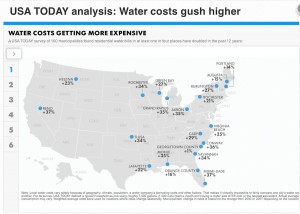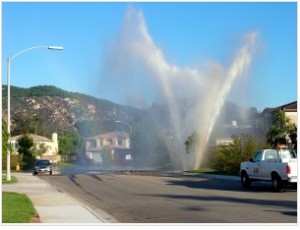Please schedule an appointment so we can discuss your irrigation needs.
Category Archives: News
The American Prospect (May 2008)
Here is a great article detailing the ongoing water problem experienced last year in the Southwest. I especially like the summary statement in the last paragraph, “Ample evidence from cities not only in the West but all over the country shows that smart water use, including conservation, efficiency, and behavioral changes, is the most cost-effective, least destructive, and most enduring approach to handling diminishing water supplies.”
Changing Water Policies in the Dry Southwest
National Geographic (Aug. 19, 2014)
This article does a good job of explaining what is happening with the underground water aquifers in the United States and why we should be concerned. Droughts are forcing us to rely more and more on these aquifers instead of surface water sources. They are being depleted at alarming rates. We cannot continue to take water for granted. Comprehensive steps and conservation efforts need to be developed and implemented before it is too late.
If You Think the Water Crisis Can’t Get Worse, Wait Until the Aquifers Are Drained
West’s historic drought stokes fears of water crisis (Washington Post, Aug. 17, 2014)
Two things jump out to me in this extensive article about the drought in the Soutwestern United States. First, the sheer size of the area (a dozen states) that is affected. Secondly, the fact that the short term shift to groundwater in the most negatively affected area such as southern California, is not a long term solution.
Seven states running out of water (USA Today, June 1, 2014)
Drought conditions are extensive and continuing in many areas of the Southwest. This article also details the large drop in reservoir levels in these states.
Water scarcity drives US communities toward smarter use recycling (Bloomberg News, March 24, 2014)
This article talks at length about the need to change our current single pipe distribution system and how much water we are not reusing. Although it does emphasize the need to change our approach and the need to recycle our water for various non-potable reuse applications as well as potentially potable ones, it does not elaborate on the expense of doing so other than mentioning that these efforts will increase water costs substantially.
Drought reaches record 56% of Continental US (LiveScience, July 5, 2012)
This article details that this year is the most extensive (app. 56%) in the 12 year history of the Drought Monitor Index and also this has occurred at an earlier date than any previous high drought year.
 As this well-researched article in USA TODAY indicates, the cost of water is rising no matter where you are located in the United States with higher rates yet to come.
As this well-researched article in USA TODAY indicates, the cost of water is rising no matter where you are located in the United States with higher rates yet to come.
“Aging Water Infrastructure”, EPA Science Matters Newsletter
 In addition to increasing demand for water, the condition of our existing water infrastructure contributes greatly to rising costs. According to the EPA, there is a potential $500 billion gap in funding by the year 2020 between needs and spending on the nation’s water infrastructure. Take a look at this EPA article for more information.
In addition to increasing demand for water, the condition of our existing water infrastructure contributes greatly to rising costs. According to the EPA, there is a potential $500 billion gap in funding by the year 2020 between needs and spending on the nation’s water infrastructure. Take a look at this EPA article for more information.
Is A Local Rain Sensor Important?
In many places in the continental United States, a significant amount of natural rainfall occurs during the growing season. All of this rain is not available for plant use. A large percentage will be lost to evaporation, runoff, or deep percolation. What reaches the roots and is utilized by the plant is called effective rainfall. For example, this year in central Virginia (using a very conservative formula) we still end up with 12.26 inches of effective rainfall for the April to October growing season with an evapotranspiration (ET) plant water requirement of 34.25 inches for the same period. This means that natural rainfall provided almost 36% of the water required for the 2013 growing season. This example emphatically demonstrates the importance of a well functioning local rain sensor.
Much of the rain that occurs during the growing season is localized. We all know that it can rain 1.5 inches on one side of town and ¼ inch on the other. The only way to account for these large variations is to install a local rain sensor with your specific system. When functioning properly, this sensor will react to the rainfall that occurs at your specific location. It will interrupt any scheduled irrigation cycle and not allow it to operate until the rain sensor has dried out, roughly paralleling soil conditions.
If you have a sensor it must be installed at a location that is open to natural rainfall. It can’t be installed under the canopy of a tree or close to the controller just because this is convenient for the installer. It must be located where it will receive natural rainfall so that it can react to actual weather conditions. Most of these units, especially the wireless devices, rely on a small battery in the transmitting unit. These batteries usually need to be replaced annually. If this battery is dead or weak, the rain sensor will not operate properly or at all.
In summary, the local rain sensor is a critical component of your landscape sprinkler system. A fully functioning and well-maintained device will prevent the operation of your system when not needed and save you large amounts of water and dollars. As per the example in the first paragraph, this small device could have saved the customer over 1/3 of the cost of operation of their landscape sprinkler system in 2013. Many of the units available on the market today have the ability to be programmed to interrupt irrigation for extended time periods even after the hydroscopic disks have dried out and the rains sensor contacts have closed. Take advantage of this low hanging fruit today. Make sure that you have a local rain sensor properly installed and fully functioning.
